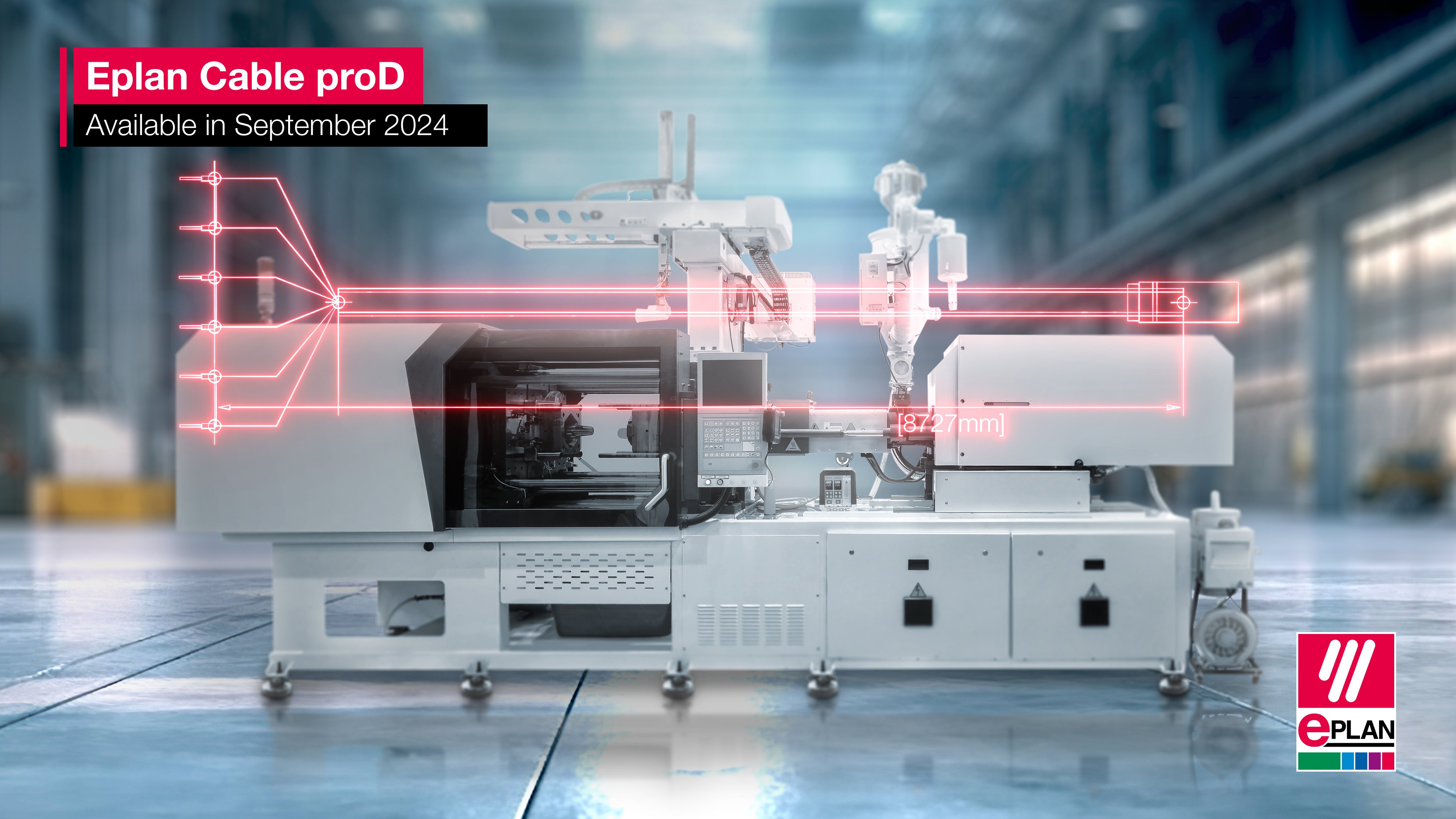Author
 Andrew Mutch
Having previously worked as an aircraft technician with HM Forces, Andy is one of our Professional Services Consultants and has been with EPLAN for 10 years. Part of Andy's role is to actively analyse customers processes, develop solution concepts and workflows for customer requirements. Andy is also our resident Harness expert!
Mutch.a@eplan.co.uk
Andrew Mutch auf LinkedIn
Andrew Mutch
Having previously worked as an aircraft technician with HM Forces, Andy is one of our Professional Services Consultants and has been with EPLAN for 10 years. Part of Andy's role is to actively analyse customers processes, develop solution concepts and workflows for customer requirements. Andy is also our resident Harness expert!
Mutch.a@eplan.co.uk
Andrew Mutch auf LinkedIn
Beyond 2D: How You Can Benefit from 3D Virtual Prototyping
The Pitfalls of 2D CAD
2D CAD (Computer-Aided Design) has provided a foundational basis for electrical designers. We would not be where we are today without this technology. However, it is time to recognise that it has several limitations that no longer serve your contemporary business structure.
One major limitation is that 2D schematics cannot wholly represent the complexity of the mechanical product design. While seeming accurate on paper, the schematic may eventually fail at assembly as it is hard to determine space for the wiring. For this reason, products originating from 2D schematics have a higher error rate, which requires costly reproduction and slows down your workflow.
Furthermore, 2D CAD design also requires physical prototypes to be built and measured to prevent the aforementioned design issues. This secondary step prolongs the product development cycle, often requiring multiple redrawn designs. These limitations make it difficult to justify using 2D CAD technology when there is a better solution just around the corner…

Introducing 3D Virtual Prototyping
3D virtual prototyping is a solution to many of the challenges associated with traditional 2D CAD software. By creating a digital twin, engineers can build a virtual representation of an electrical design. A digital twin replicates the physical and functional characteristics of a system, which presents engineers with the opportunity to simulate real-world applications without constructing a physical prototype.
In eCAD software (electrical CAD), a digital twin both provides an accurate 3D model while also incorporating updated data analysis. This makes it possible for engineers to refine their designs early in the process; early recognition of errors reduces the chance of expensive adjustment during the production stage, and ultimately results in a more accurate final product.
Here are some of the key benefits of implementing 3D virtual prototyping into your business practices:
1. Advanced Visualisation
One of the prior disadvantages of 2D CAD is its inability to showcase the dynamics of a design. With 3D virtual prototyping, engineers and clients can both benefit from early visualisation as a 3D model allows stakeholders to better understand component placement and functionality.
This visual representation allows stakeholders to also feedback if there’s anything they are unsatisfied with, saving any reproduction costs and keeping the client happy.
2. Lower Costs
The digital twin allows electrical designers to resolve any issues very early in the design process, which therefore saves the business both time and resources.
This preventative measure helps reduce overall project costs; therefore, 3D eCAD software is simultaneously faster to use and more economical. What’s not to love?
3. Flexibility with Accuracy
Traditional 2D CAD software often suffered with documentation discrepancies when updates were made. Because digital twins can be easily changed, electrical engineers can adjust iterations without the need for any physical modifications.
This flexible approach speeds up the project and means it is less time-consuming if the prototype does require updating. The final product is guaranteed to match the constructed design, which reassures the customer with an accurate representation of their product.
How Eplan Can Help
Eplan Harness proD is a 3D software system designed for wire harness design and documentation. Electrical engineers can then create detailed digital twins of their cable and wire harness schematics. Eplan software streamlines your workflow by integrating electrical design with mechanical CAD (MCAD), which makes it easier to place and route components like connectors and wires.

Why You Should use Eplan Harness proD:
- Accuracy: Eplan Harness proD allows you to select precise cable and wire lengths directly within the 3D model which enhances the production documentation with highly accurate data.
- Automation: Harness proD automates your document workflow and therefore reduces the time to create wire harnesses manually.
- Integration: The software seamlessly integrates with existing MCAD systems which supports smooth collaboration between mechanical engineers and electrical designers.
Why You Should Use Cable proD:
Eplan Cable proD is designed to simplify machine cabling through 3D models. The software provides a quick and efficient way to determine cable lengths and routing paths, ultimately resulting in precise planning and reliable implementation.
- Efficient Cabling: With the ability to route cables within a 3D model, engineers can determine accurate lengths which reduces the need for trimming or reordering cables, even with Prefabricated manufacturer specific cables.
- Flexibility: Digital twins created in Eplan Cable proD negates the need for physical prototypes, allowing engineers to instantly make adjustments to the project.
Final Thoughts
While it may seem daunting initially, moving away from 2D CAD into 3D virtual prototyping is an important way to stay competitive. Digital twins improve design accuracy, reduces cost, enhances product quality, and is a more sustainable business practice.
Through advanced software like Eplan Harness proD and Eplan Cable proD, electrical engineers can take full advantage of contemporary technology which encourages efficiency and cross-collaboration. The advantages far outweigh the comfort of traditional 2D methods, so it is time to embrace electrical design excellence.



Comments